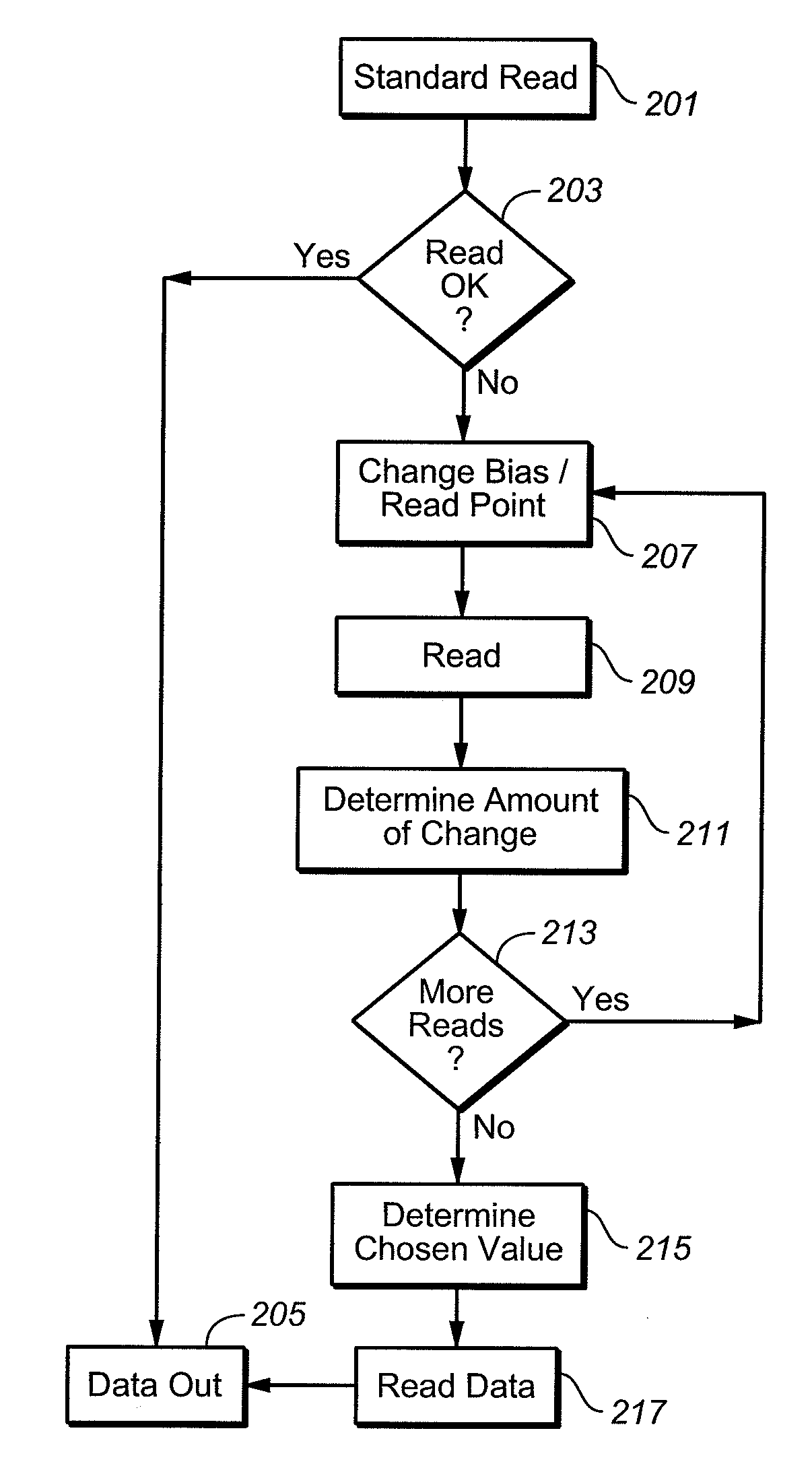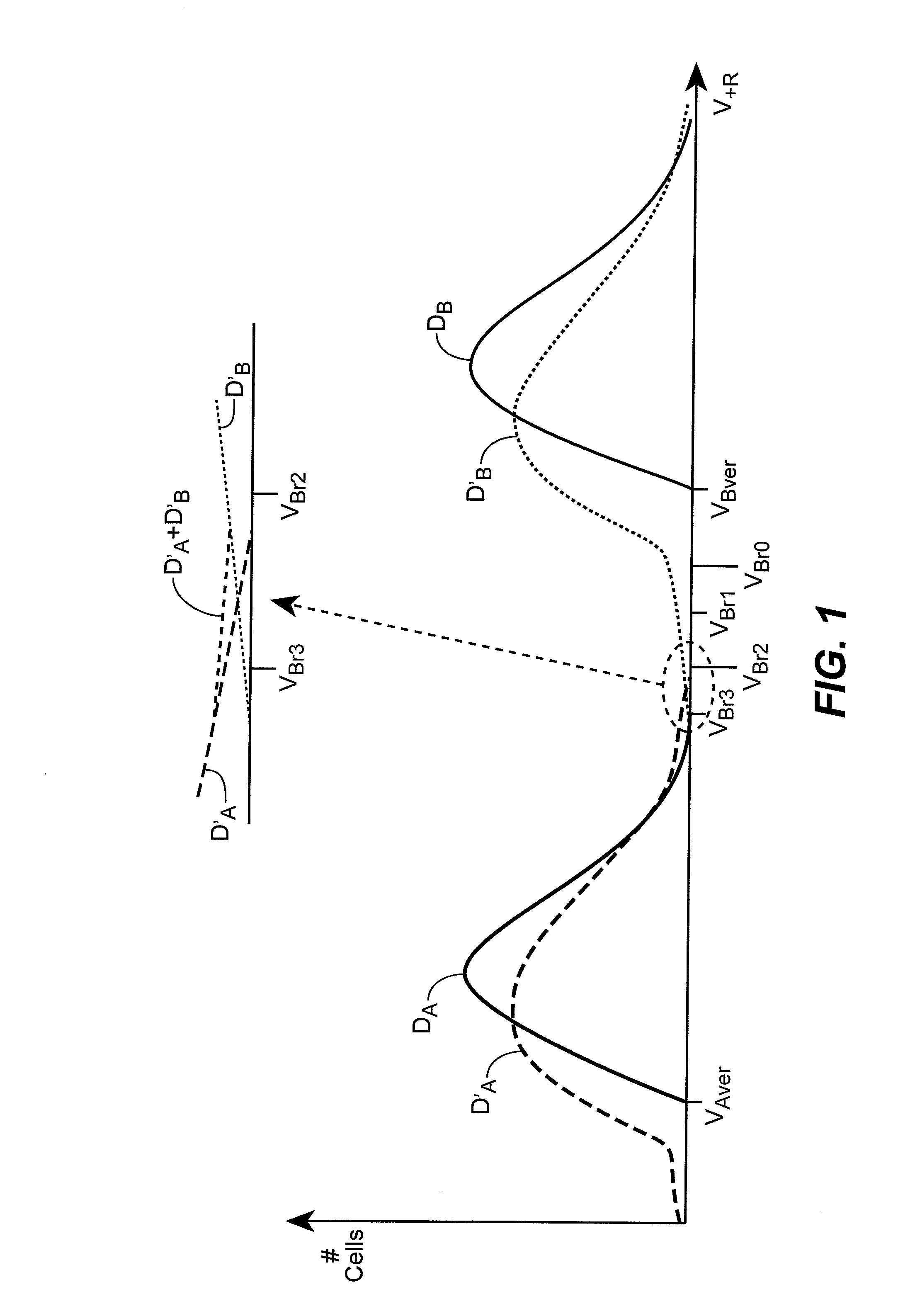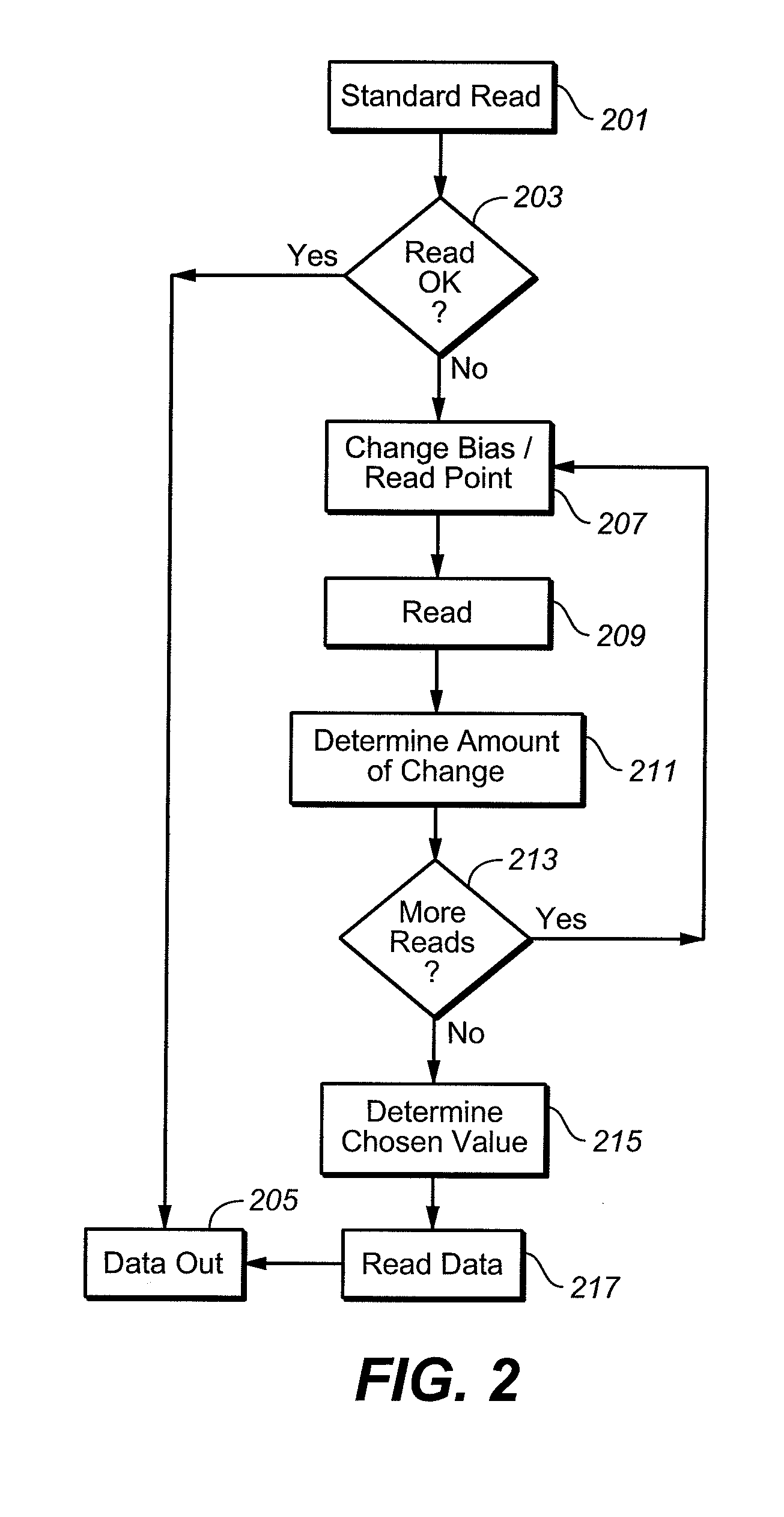Memory with Cell Population Distribution Assisted Read Margining
a memory and cell population technology, applied in the field of reading data content, can solve problems such as over-programming, data retention problems, read and program disturbance, and data storage robustness increases, and can solve problems such as data retention problems, which are often further aggravated, and affect the robustness of data storag
- Summary
- Abstract
- Description
- Claims
- Application Information
AI Technical Summary
Problems solved by technology
Method used
Image
Examples
Embodiment Construction
[0011]The present invention is related to reading the data content of memory systems. When data, whether stored in either binary or multi-state per memory cell form, is programmed into a memory, the population of individual cells programmed to a given state will form distributions around the desired values of the parameter corresponding to the respective storage states. For example, in the case of a flash memory, its threshold voltage characterizes a particular data state. If a data state corresponds to a threshold voltage of, say, 2 volts, the cells programmed to this state will not all end up at exactly 2.0 volts, but rather be spread out over a distribution mostly above the corresponding program verify level for that state. Although at the time of programming the distributions corresponding to the data states may be well defined and clearly separated, over time and operating history the distributions may spread. This degradation can lead to misreading of data as the read conditio...
PUM
 Login to View More
Login to View More Abstract
Description
Claims
Application Information
 Login to View More
Login to View More - R&D
- Intellectual Property
- Life Sciences
- Materials
- Tech Scout
- Unparalleled Data Quality
- Higher Quality Content
- 60% Fewer Hallucinations
Browse by: Latest US Patents, China's latest patents, Technical Efficacy Thesaurus, Application Domain, Technology Topic, Popular Technical Reports.
© 2025 PatSnap. All rights reserved.Legal|Privacy policy|Modern Slavery Act Transparency Statement|Sitemap|About US| Contact US: help@patsnap.com



